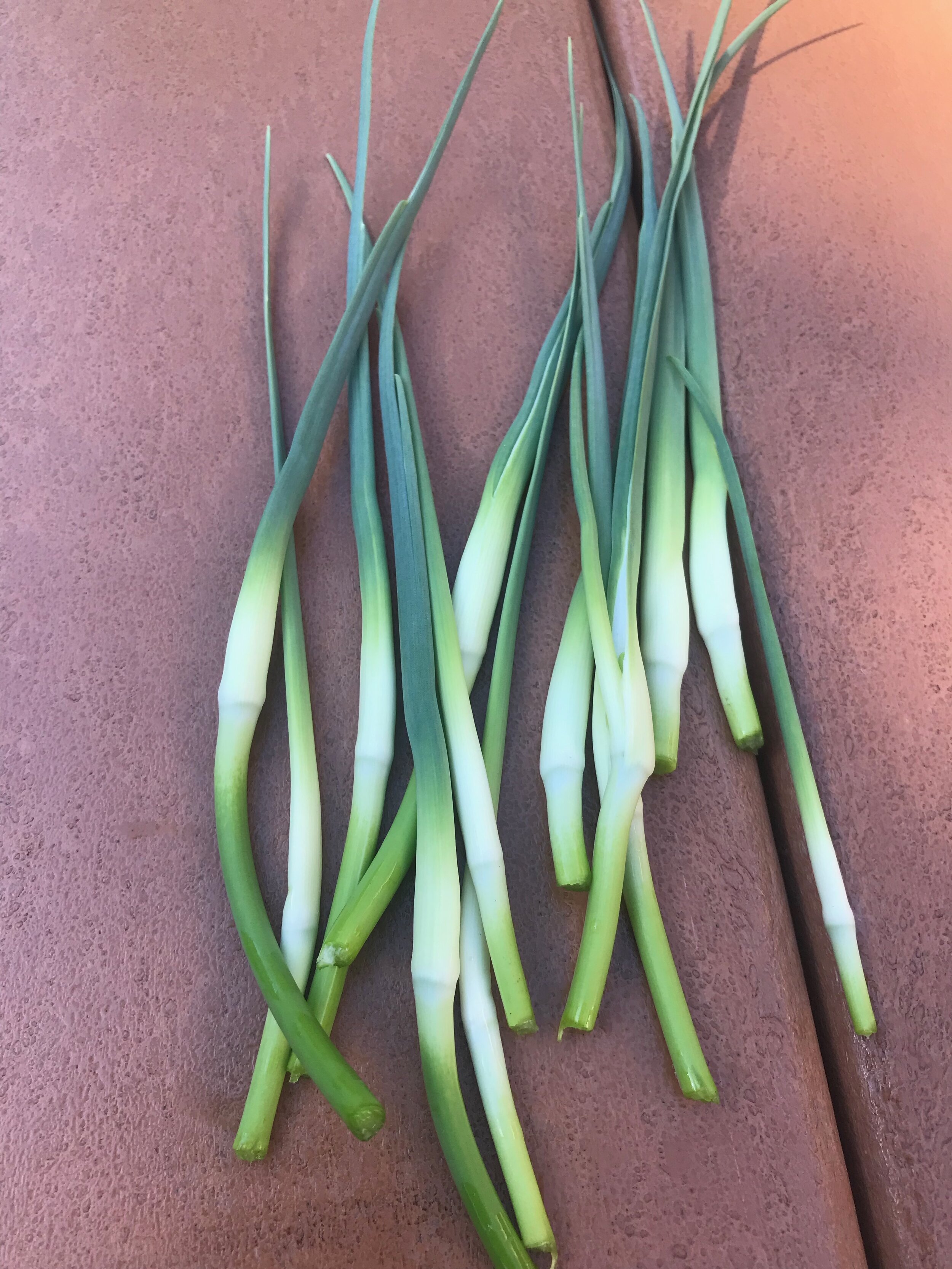Pruning Garlic
Last week I wrote about pruning my Chorale rose bush, and pruning in general. I discuss pruning again this week, though of a different sort: I also prune garlic.
I suspect that some variety of garlic thrives in every part of the world. It is a very adaptable plant, and I encounter it in every cuisine I have tasted. Garlic is in the Allium family, closely related to onions, leeks, shallots. They all have a lot in common, but garlic has special cultural requirements. The garlic I grow was brought to this country from Ostfriesland, Germany, by my great- great- grandparents, who ended up farming in western Minnesota. Their garlic has passed down through the generations of Tammens, and now resides with me. My brothers and I call it German Stiff Neck, which means that it produces a rigid stalk, unlike the soft neck garlic one commonly purchases in the store. This stalk terminates, at its tip, in a “scape,” which functions in place of a flower; left to its own devices, it produces small bulblets which end up on the ground, grow roots, and become, after a couple of seasons, new garlic plants. All of the parent plant’s strength goes into producing this reproductive unit, and the head, the part we would eat, shrivels up.
This is where the pruning comes in. As soon as the stalks emerge from the plants, I clip the tops off (and eat them—they are delicious). The stalks stop growing, and the underground garlic heads expand, instead of feeding the scapes. We are in the middle of that process right now-- I prune every day, so that the scapes don’t get ahead of me. By July 1, the leaves will begin drying and turning brown; I await the magic day when the heads are dry enough to store, but not so far along that the outer skin of the heads begins to deteriorate, allowing the heads to shatter in the ground and separate into cloves. I dig the plants, leaving the heads attached, about July 15, and hang them in a dry, shaded place to cure. In September I choose the best looking heads, separate them into cloves, and plant them for the following year, much as one would plant tulip or daffodil bulbs.
Were I to leave the garlic to its own devices, it would happily fulfill its natural function, putting up strange and beautiful stalks, being itself; but it would not produce the fat garlic heads my family eats the rest of the year. The garlic bed needs me, needs my experience, my judgment, my shaping, my work, if it is to be productive.
As I wrote last week, gardening is, for me, the most important, dirt-under-the-fingernails metaphor for what I do as a musician, and as a conductor. My job is to gather the raw elements into one place, assess them, keep them from going each in its own way and doing whatever it feels like doing, whenever it feels like it; prune and shape the vocal sound, the musical expression, get everyone singing in tune and in tempo with one another, pronouncing uniform vowels and consonants, entering and exiting simultaneously, moving and sounding together. Helmuth Rilling said that the choir’s first job is to be together. The conductor’s first job is to define what that “together” is to be, and shape the choir in that direction.
The results are tasty and satisfying.


